A wood kitchen table is often the centerpiece of your home, serving as a gathering spot for family meals, holiday celebrations, and everyday activities. To keep it looking beautiful and functional, regular cleaning and maintenance are essential.
This guide on how to clean wood kitchen table will provide you with simple, effective methods to clean your wood kitchen table, ensuring that it remains a cherished part of your home for years to come. Whether you’re dealing with daily dust and crumbs or the occasional spill, knowing how to properly care for your table will help preserve its natural beauty and integrity.
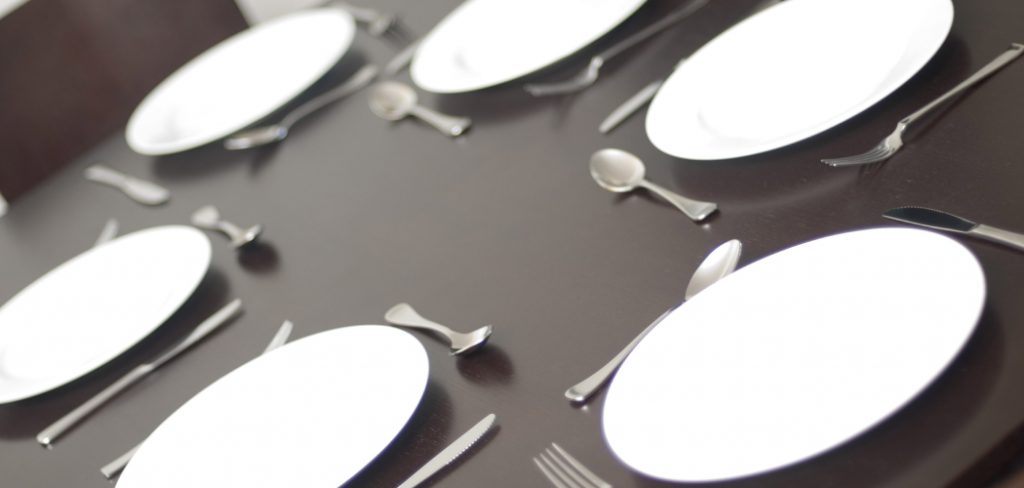
Why is It Important to Clean a Wood Kitchen Table?
Cleaning your wood kitchen table not only keeps it looking good, but it also helps maintain its structural integrity. Spills and stains can penetrate the surface of the wood if left unattended, leading to discoloration and potential damage over time. Regular cleaning can also prevent scratches or other forms of wear and tear that can detract from the overall appearance of your table.
It’s also important to note that different types of wood may require different cleaning methods, so it’s crucial to understand the type of wood your kitchen table is made from before starting the cleaning process.
Now, let’s dive into the steps of cleaning a wooden kitchen table!
What Supplies Do You Need for Cleaning a Wood Kitchen Table?
Before diving into the cleaning process, make sure you have all the necessary supplies on hand. Here are some basic items you’ll need:
Microfiber Cloth:
This soft, lint-free cloth is perfect for gently wiping away dust and crumbs from your wood kitchen table without scratching the surface.
Mild Soap:
A mild dish soap or a specially formulated wood cleaner is best for cleaning your wooden kitchen table. Avoid using harsh chemicals or abrasive cleaners as they can damage the wood finish.
Warm Water:
Warm water is sufficient for most routine cleanings. However, if you’re dealing with tough stains or spills, hot water may be necessary to effectively remove them.
Soft-bristled Brush:
For stubborn areas of dirt or grime, a soft-bristled brush can be used to gently scrub the surface of your wood kitchen table without causing any damage.
Wood Polish:
Using a wood polish can help restore the shine and luster of your table while also providing protection against future spills and stains. Be sure to choose a polish that is specifically formulated for the type of wood used in your kitchen table.
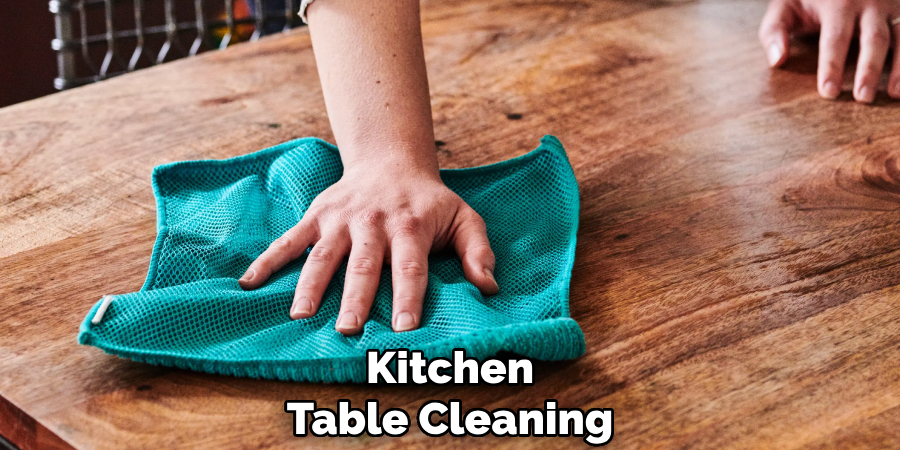
8 Simple Methods on How to Clean Wood Kitchen Table
Method 1: Wipe Down with a Microfiber Cloth
Begin by clearing your kitchen table of any items such as placemats, dishes, or decorations. Take a clean microfiber cloth and gently wipe down the entire surface of the table to remove dust, crumbs, and any loose debris. The microfiber material is designed to lift dirt without scratching the wood, making it ideal for routine cleaning.
Be sure to reach all edges and corners for a thorough wipe-down. This simple step not only keeps your wood kitchen table clean but also helps maintain its natural shine by preventing the accumulation of dust and particulate matter.
Method 2: Use a Mild Soap and Warm Water
After completing the initial wipe-down with a microfiber cloth, prepare a mild cleaning solution by mixing a few drops of mild dish soap with a bowl of warm water. Wet another clean microfiber cloth with soapy water, ensuring it is damp but not soaked, as excessive moisture can damage the wood. Gently wipe the surface of the table using a damp cloth, working in small sections and following the grain of the wood to avoid any potential damage.
This process helps to remove any sticky residue or light stains that the dry wipe-down couldn’t eliminate. After cleaning, use a fresh, dry microfiber cloth to thoroughly dry the table, ensuring no water is left behind. This method effectively cleans your kitchen table without compromising the wood or finish.
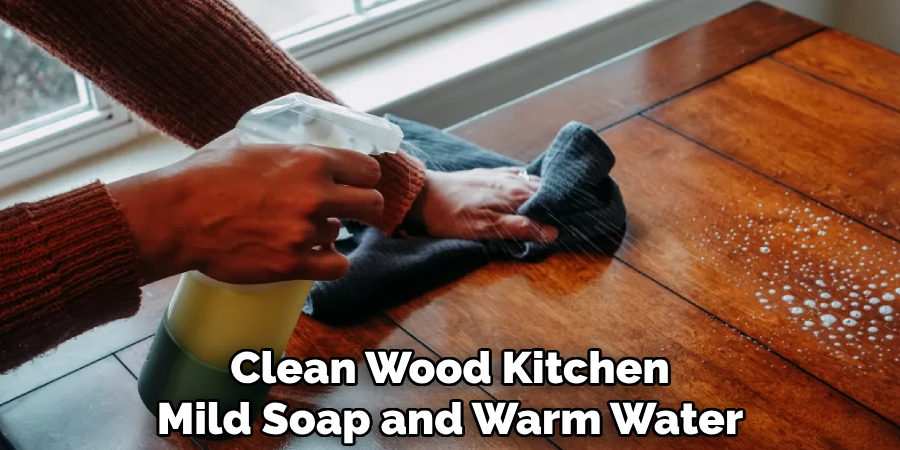
Method 3: Spot Clean Stains
For stubborn stains or sticky spots that persist after using mild soap and water, focus on spot cleaning to preserve the wood’s integrity. Begin by identifying the affected area and applying a small amount of the mild soapy solution directly onto it. Take a soft-bristled brush or a microfiber cloth and gently rub the stain in a circular motion, being cautious not to apply too much pressure which might scratch the surface.
For more persistent stains, a mixture of equal parts vinegar and water can be applied using a cotton swab for precision in targeting the stain without over-saturating the wood. After carefully treating the stain, use a clean, damp cloth to wipe away any residue, and immediately follow with a dry cloth to absorb any remaining moisture. This targeted approach ensures that tough spots are managed effectively while maintaining the beauty of your wood kitchen table.
Method 4: Remove Water Rings with Mayo
Water rings are a common issue on wood kitchen tables, and they can be quite unsightly. To remove them, take a small amount of mayonnaise and apply it directly onto the water ring. Allow it to sit for a few minutes, then gently rub it in using a soft cloth or your fingers. The oils in the mayonnaise will penetrate the wood and lift the stain out of the surface. Afterward, wipe away any residue with a clean cloth and polish as usual.
The mayo method is a handy trick for removing water rings without damaging the wood or finish.
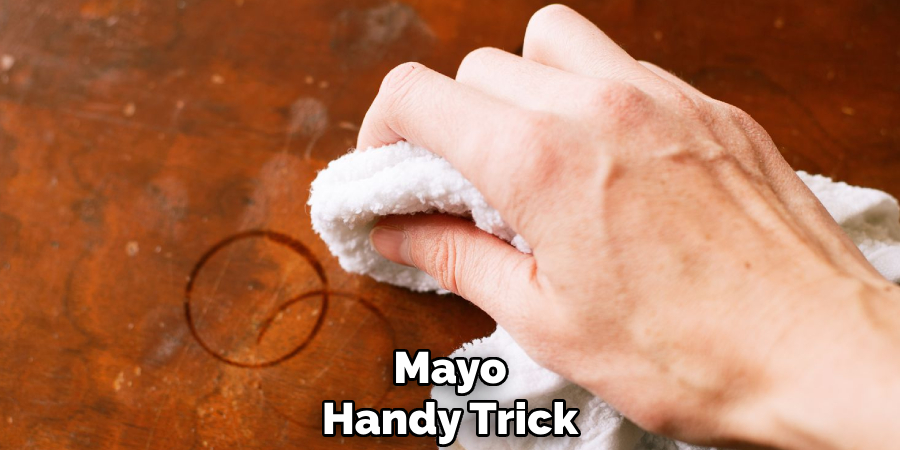
Method 5: Polish with Olive Oil and Lemon Juice
For an all-natural polish, mix equal parts olive oil and lemon juice in a bowl. Take a clean cloth and dip it into the mixture, then use it to rub onto the surface of your wood kitchen table. The acidic properties of lemon juice help break down grime while the oil nourishes and conditions the wood, leaving behind a beautiful shine. Afterward, wipe away any excess with a dry cloth to reveal a clean, polished finish.
If you don’t have lemon juice on hand, you can also use vinegar as a substitute for the acidic component in this method.
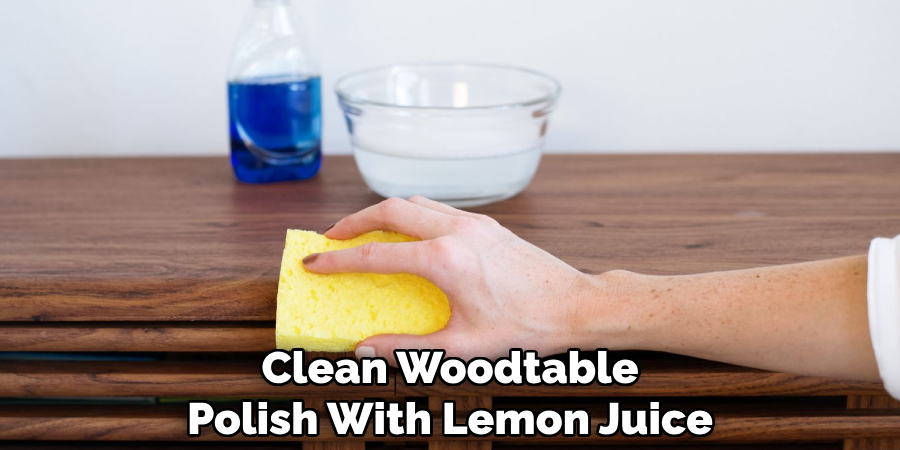
Method 6: Use Baking Soda for Tough Stains
Baking soda is another effective natural cleaner that can be used on wood kitchen tables. Mix equal parts baking soda and water to create a paste, then apply it directly onto the stain using a cloth or soft-bristled brush. Gently rub the paste into the stain in a circular motion, then wipe away with a clean damp cloth. Baking soda helps to remove tough stains without damaging the wood finish.
The paste can also be used to gently buff out small scratches in the wood.
Method 7: Remove Wax Build-Up with Mineral Spirits
If your wood kitchen table has a wax finish, over time, a build-up of wax can occur and make the surface look dull and dirty. To remove this build-up, use mineral spirits on a clean cloth to gently wipe down the table’s surface. The mineral spirits will dissolve the wax without harming the wood underneath. Afterward, wipe away any residue with a damp cloth and dry thoroughly.
It is essential to follow up with polishing after removing wax build-up to restore the shine and protect the wood.
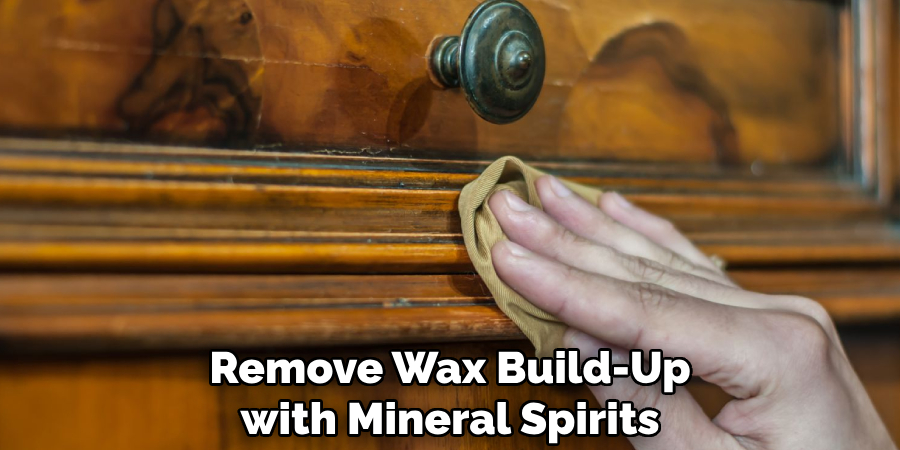
Method 8: Prevent Future Damage with Coasters and Trivets
Prevention is key to maintaining the beauty and integrity of your wood kitchen table. Make it a habit to use coasters, placemats, and trivets when setting items on the table. These accessories serve as a barrier between hot dishes, cold drinks, and other materials that can cause damage or leave marks on the wood surface.
Furthermore, avoid placing heavy or sharp objects directly onto the table’s surface, as this can lead to scratches or dents. Regularly cleaning up spills immediately also helps prevent any potential stains or damage.
By following these simple methods on how to clean wood kitchen table for cleaning and caring for your wood kitchen table, you can ensure that it remains a beautiful and functional centerpiece in your home for years to come. So the next time you sit down for a family meal or entertain guests, you can do so with peace of mind, knowing that your kitchen table is clean and well-maintained. Happy cleaning!
Frequently Asked Questions
Q: Can I Use Regular Household Cleaners on My Wood Kitchen Table?
A: It is not recommended to use regular household cleaners on your wood kitchen table, as they may contain harsh chemicals that can damage the wood or finish. Stick to using mild soap and water or natural cleaning solution alternatives.
Q: How Often Should I Clean My Wood Kitchen Table?
A: It is recommended to clean your wood kitchen table at least once a week, or more frequently if it experiences heavy use. Regular cleaning helps prevent build-up and keeps the table looking its best.
Q: What Should I Do If My Wood Kitchen Table Has Scratches?
A: Minor scratches can be buffed out using a mixture of equal parts olive oil and vinegar, applied with a soft cloth in circular motions. For deeper scratches, it’s best to consult a professional for repair options.
Q: Is There Anything I Should Avoid When Cleaning My Wood Kitchen Table?
A: Yes, avoid using abrasive cleaners or tools, such as steel wool or harsh scrub brushes, which can damage the wood surface. Also, avoid using excessive water or leaving spills to sit for extended periods, as this can cause warping or discoloration.
Q: How Can I Protect My Wood Kitchen Table From Heat Damage?
A: Always use coasters and trivets when placing hot dishes on your wooden kitchen table. You can also place a heat-resistant mat or cloth underneath hot items for added protection. Additionally, avoid placing your table near direct sunlight or heat sources to prevent any potential damage.
Conclusion
Maintaining the cleanliness and beauty of your wood kitchen table is not only about preserving its aesthetic appeal but also about extending its lifespan. By employing natural cleaning methods and taking preventive measures, such as using coasters and trivets, you can ensure your table remains a cherished centerpiece in your home. Regular care with household items like olive oil, baking soda, and gentle mineral spirits can remedy common issues without causing damage.
Remember that being proactive about table maintenance, including promptly addressing spills and stains, is key to enjoying a pristine dining surface for years to come. Adopting these practices contributes not just to the longevity of your table but also to a healthier and more inviting home environment. Thanks for reading this article on how to clean wood kitchen table.
Professional Focus
Angela Ervin, a former interior designer turned blogger, specializes in kitchen design and renovations. Through her website, she blends her passion for cooking with design expertise, sharing practical and creative ideas. Known for balancing functionality and beauty, Angela’s insightful content has made her a trusted voice in home design and lifestyle.
About the Author
Angela Ervin, an experienced interior designer and blogger, combines her passion for kitchen renovations with storytelling. Living in Petersburg with her family, she enjoys cooking and testing her projects firsthand. Known for her humor and relatable style, Angela shares creative, functional design insights through her content, making her a trusted voice in home design.
Education History
University: Virginia Commonwealth University
Degree: Bachelor of Fine Arts (BFA) in Interior Design
- Angela’s education at VCU focused on mastering core interior design principles, including spatial planning, color theory, materials selection, and sustainable design practices.
- She gained hands-on experience through studio projects and collaborative design exercises, which honed her ability to create functional and aesthetically pleasing environments.
- Her coursework also emphasized problem-solving and practical applications of design, preparing her for real-world projects like her self-directed kitchen renovations.
- The program’s strong foundation in both technical skills and creative expression shaped Angela’s ability to seamlessly integrate form and function in her work.


